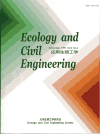Volume 23, Issue 2
Displaying 1-16 of 16 articles from this issue
- |<
- <
- 1
- >
- >|
ORIGINAL PAPER
-
2021 Volume 23 Issue 2 Pages 261-278
Published: February 28, 2021
Released on J-STAGE: April 06, 2021
Download PDF (2663K) -
2021 Volume 23 Issue 2 Pages 279-293
Published: February 28, 2021
Released on J-STAGE: April 06, 2021
Download PDF (4979K) -
2021 Volume 23 Issue 2 Pages 295-307
Published: February 28, 2021
Released on J-STAGE: April 06, 2021
Download PDF (3662K)
CASE STUDY
-
2021 Volume 23 Issue 2 Pages 309-317
Published: February 28, 2021
Released on J-STAGE: April 06, 2021
Download PDF (6802K) -
2021 Volume 23 Issue 2 Pages 319-329
Published: February 28, 2021
Released on J-STAGE: April 06, 2021
Download PDF (14847K) -
2021 Volume 23 Issue 2 Pages 331-340
Published: February 28, 2021
Released on J-STAGE: April 06, 2021
Download PDF (15666K)
SHORT COMMUNICATION
-
2021 Volume 23 Issue 2 Pages 341-347
Published: February 28, 2021
Released on J-STAGE: April 06, 2021
Download PDF (1225K) -
2021 Volume 23 Issue 2 Pages 349-356
Published: February 28, 2021
Released on J-STAGE: April 06, 2021
Download PDF (1520K)
REPORT
-
2021 Volume 23 Issue 2 Pages 357-363
Published: February 28, 2021
Released on J-STAGE: April 06, 2021
Download PDF (17844K)
FEATURE: Advanced Ecosystem Monitoring using Camera and Image Processing Technology
PREFACE
-
2021 Volume 23 Issue 2 Pages 365-368
Published: February 28, 2021
Released on J-STAGE: April 06, 2021
Download PDF (763K)
CASE STUDY
-
2021 Volume 23 Issue 2 Pages 369-376
Published: February 28, 2021
Released on J-STAGE: April 06, 2021
Download PDF (8591K)
SHORT COMMUNICATION
-
2021 Volume 23 Issue 2 Pages 377-382
Published: February 28, 2021
Released on J-STAGE: April 06, 2021
Download PDF (1034K)
ORIGINAL PAPER
-
2021 Volume 23 Issue 2 Pages 383-393
Published: February 28, 2021
Released on J-STAGE: April 06, 2021
Download PDF (2230K) -
2021 Volume 23 Issue 2 Pages 395-404
Published: February 28, 2021
Released on J-STAGE: April 06, 2021
Download PDF (12506K)
REPORT
-
2021 Volume 23 Issue 2 Pages 405-408
Published: February 28, 2021
Released on J-STAGE: April 06, 2021
Download PDF (7352K) -
Remote monitoring of fish activity using a smartphone camera with fisheye lens and image processing.2021 Volume 23 Issue 2 Pages 409-413
Published: February 28, 2021
Released on J-STAGE: April 06, 2021
Download PDF (1383K)
- |<
- <
- 1
- >
- >|
